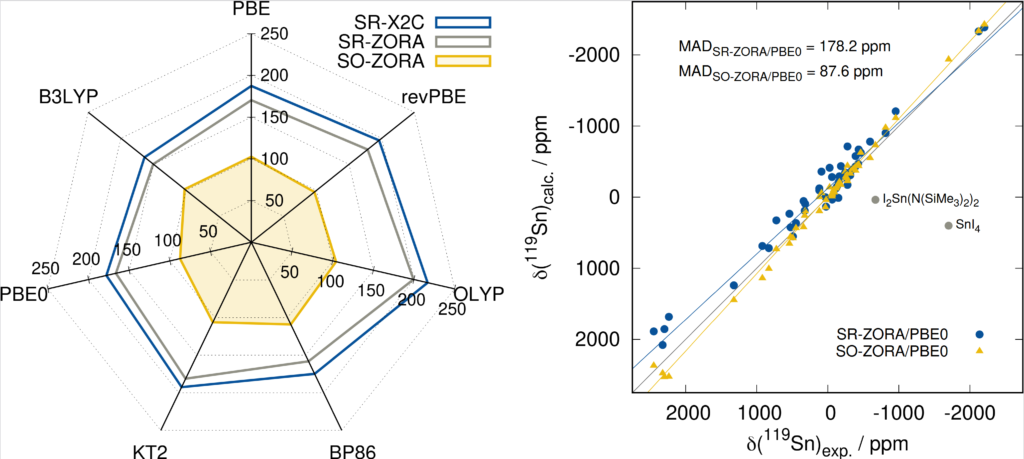Benchmark Study on the Calculation of 119Sn NMR Chemical Shifts
Nuclear magnetic resonance (NMR) spectroscopy is one of the most important analytical methods for elucidating chemical structures. Nevertheless, for some nuclei the range of possible chemical shifts is huge and corresponding NMR measurements are often time consuming. Accordingly, the reliable chemical shift prediction by robust quantum chemical methods is of great general interest.
To evaluate the performance of common and new quantum chemical approaches for the prediction of 119Sn NMR chemical shifts, a recent study presents a new benchmark set, referred to as SnS51. It features 50 tin-containing compounds with tin in various bonding motifs and molecule sizes ranging from 4 to 209 atoms. A total number of 51 experimental 119Sn NMR shifts ranging from 2448 to -2204 ppm serve as a reference for the evaluation of computational methods.
Fifteen density functional approximations (DFA) are assessed for the calculation of 119Sn NMR shifts. They are combined with three different scalar (X2C, ZORA) and spin-orbit (ZORA) relativistic approaches, and the influence of conformational flexibility on the chemical shift prediction is evaluated based on conformer-rotamer ensembles generated by the CREST/CENSO algorithms. Further, the structure dependence of the calculated 119Sn NMR chemical shifts is investigated and the applicability of semi-empirical quantum mechanical (GFNn-xTB) or force-field (GFN-FF) methods is investigated. A simple linear scaling approach is examined for further improving the results. It is demonstrated that robust hybrid exchange-correlation functionals such as PBE0 in combination with a triple-zeta quality basis set (TZP), COSMO solvation, and a spin-orbit relativistic Hamiltonian yield good overall mean absolute deviations below 100~ppm (also see the NMR FAQ).

J. B. Stückrath, T. Gasevic, M. Bursch, and S. Grimme, Benchmark Study on the Calculation of 119Sn NMR Chemical Shifts, Inorg. Chem. 2022, 61, 3903-3917
Key conceptsADF NMR Relativistic DFT